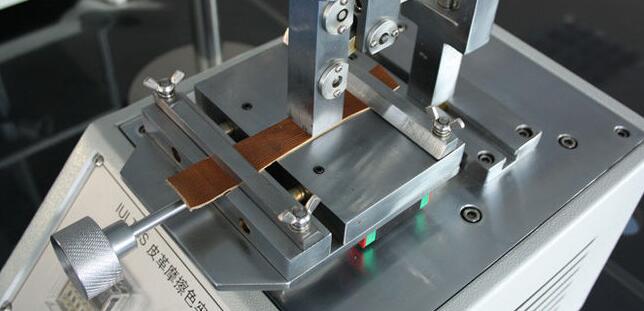ISO 11640 SATRA TM 173 Friction Leather Color Rubbing Fastness Tester

ISO 11640 SATRA TM 173 Friction Leather Color Rubbing Fastness Tester is a standardized testing method for evaluating the color fastness of leather products, specifically the resistance to color transfer when rubbing against other materials.
Corresponding standard :
ISO-11640-1993 ,QB/T 2537-2001,GB/T 1327

1. ISO 11640: ISO 11640 is a standard developed by the International Organization for Standardization (ISO) and is titled "Leather -- Tests for colour fastness -- Colour fastness to rubbing." This standard specifies a test method for assessing the color fastness of leather to rubbing. It evaluates the resistance of the leather's color to transfer or staining when subjected to rubbing or friction.
The ISO 11640 test involves rubbing a piece of white cotton fabric against the surface of the leather sample using a specified pressure and number of rubs. After the rubbing process, the color transfer or staining on the fabric is assessed visually or instrumentally. The test provides information on the leather's ability to resist color transfer during normal use or contact with other materials.
2. SATRA TM 173: SATRA TM 173 is a test method developed by SATRA, an independent research and testing organization specializing in footwear and leather goods. The full title of the test method is "SATRA TM 173: Colour Fastness to Rubbing (Crockmeter Method)." This method is specifically designed for evaluating the color fastness of materials, including leather, to rubbing or abrasion.
The ISO 11640 SATRA TM 173 Friction Leather Color Rubbing Fastness Tester is a specialized instrument that applies a controlled rubbing action to the surface of the material under test. The rubbing is performed using a specified abrasive material or a specified rubbing head. The test assesses the extent of color transfer from the material to a white or light-colored cotton fabric or a colorfast fabric.
Both ISO 11640 and SATRA TM 173 are widely accepted test methods for evaluating the color fastness to rubbing of leather or other materials. The specific procedures, conditions, and evaluation criteria can be found in the respective standards.
It's important to follow the detailed instructions provided in these standards to ensure accurate and reliable testing results.
2023-11-16 14:30

